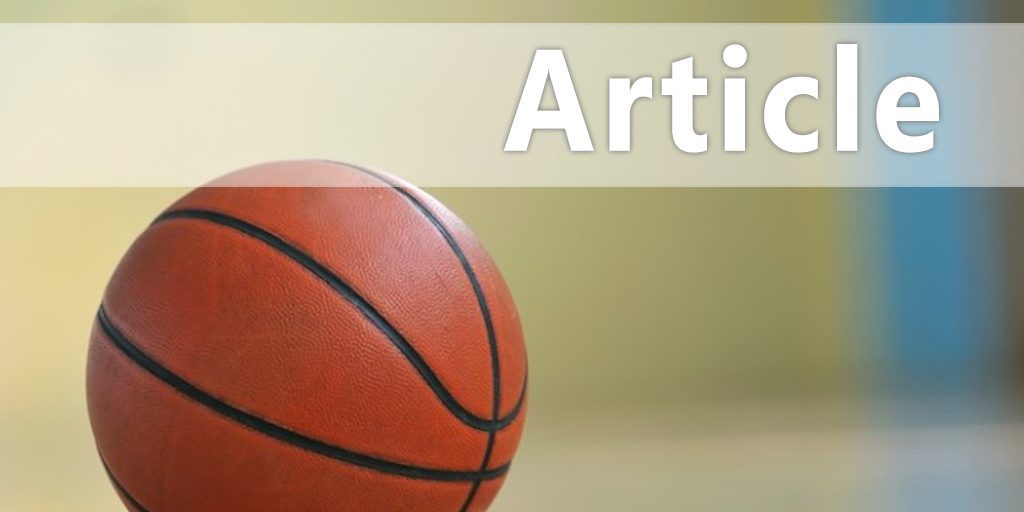| Individual Defensive Rebounding Drills |
| By: Ryan Goodson
Originally Published in: Basketball Essentials Provided by: Human Kinetics Use the hit-go technique to stop your opponent's path to the rebound by striking them with a forearm to the chest. As soon as contact is made and the opponent's forward progress is momentarily stopped, break contact and sprint to pursue the basketball. It is important to keep the elbow bent and to generate power from the lower body and not the arm. Exerting power from the upper body by extending the elbow will result in a foul. HIT-GO DRILL Breakdown Setup • Use one player and one blocking pad. • This drill is executed without a basketball. The player is inside the lane. The coach has the blocking pad and is outside the three-point arc. Execution 1. The coach blows the whistle. 2. The player sprints toward the coach with short, choppy steps and blasts the coach with a bent forearm to the chest. 3. The player then immediately sprints toward the rim, leaps off the ground, and secures the imaginary basketball. 4. The player repeats the drill 10 times. Coaching Point A player should make contact with their forearm to the opponent's chest for only a moment before releasing contact to pursue the basketball. Boxout Technique Use the boxout technique to stop your opponent's path to the basketball by striking them with a bent forearm to the chest, making a front or reverse pivot, and ending with your posterior against the opponent's thighs and your back to the opponent's chest. When boxing out, keep your hands and arms high above your head and in the shape of a field-goal post to prevent your opponent from reaching over you for the basketball. When the basketball hits the rim, break contact with your opponent and pursue the ball. BOXOUT DRILL Breakdown Setup • Use one player and one blocking pad. • This drill is executed without a basketball. The player is inside the lane. The coach has the blocking pad and is outside the three-point arc. Execution 1. The coach blows the whistle. 2. The player sprints toward the coach with short, choppy steps; blasts the coach with a bent forearm to the chest; and makes a front-pivot or reverse-pivot boxout. 3. The player holds the boxout while driving the coach back until the coach blows the whistle again. 4. On the second whistle, the player sprints toward the rim, leaps off of the ground, and secures the imaginary basketball. 5. The player repeats the drill 10 times. Coaching Point The player should aggressively pursue the boxout with the goal of not allowing the coach to enter the lane. Chest-Out Technique The chest-out technique is an emergency maneuver you can use when your opponent has forced you low and below the rim and thus negated your dominant inside position. In this situation, quickly turn and face your opponent, lift your hands high above your head, get low and wide at the base, and subtly push your opponent out and away from the basket with your hips. This technique may not allow you to secure the rebound, but it will help to prevent your opponent from obtaining it. CHEST-OUT DRILL Breakdown Setup • Use one player and one blocking pad. • This drill is executed without a basketball. The player is in the inside position under the rim. The coach has the blocking pad and is inside the paint in front of the rim. Execution 1. The coach blows the whistle. 2. The player turns toward the coach and executes a chest-out move. 3. The player holds the chest out while driving the coach back until the coach blows the whistle. 4. On the second whistle, the drill stops. 5. The player repeats the drill 10 times. Coaching Point Make sure the player's hands are high and above the head to create a barrier for the opponent to rebound through. Pursuit Once you've executed one of the previous techniques to maintain inside position, you must immediately pursue the basketball with relentless determination. That means you must sprint and jump high! As a rule, release contact from your opponent once the basketball hits the rim. Time your release so you can retrieve the basketball at the apex of the opponent's jump. Remember to always secure the basketball with two hands and tuck it under your chin for protection. When you return to the ground, enter a low and wide stance to ensure balance and body control. BACKBOARD CATCH-AND-CHIN DRILL Breakdown Setup • Use one player and one basketball. • The player has the ball and is in front of the rim facing the backboard Execution 1. The player tosses the basketball off the backboard. 2. The player then leaps off of the ground, catches the basketball with two hands at the apex of the jump, and lands with a wide base to ensure body control and balance. The player protects the basketball by securing it under the chin and tight to the body. 3. The player repeats the drill 12 times. 4. On the 12th repetition, the player finishes the drill with a strong, two-hand power layup. Coaching Point When obtaining the rebound, make sure to have the elbows out and not in to secure the inside position and space for the shot. REBOUNDING PURSUIT DRILL Breakdown Setup • Use one player and one basketball. • The player has the ball and is outside the lane on the right side of the basket. Execution 1. The player tosses the ball off of the backboard. The basketball should hit the glass at such an angle that it repels to the opposite side of the rim. 2. The player ferociously pursues the basketball and rebounds it at the apex of the jump. 3. The player must catch the basketball before it hits the ground and also land with both feet outside of the lane for the repetition to count. 4. The player then stands on the left side of the basket and repeats the drill. 5. The player repeats the drill 10 times on each side. Coaching Point The best rebounders don't just run to the basketball, but they sprint through it. I tell my players to "sprint to it and through it!" |






